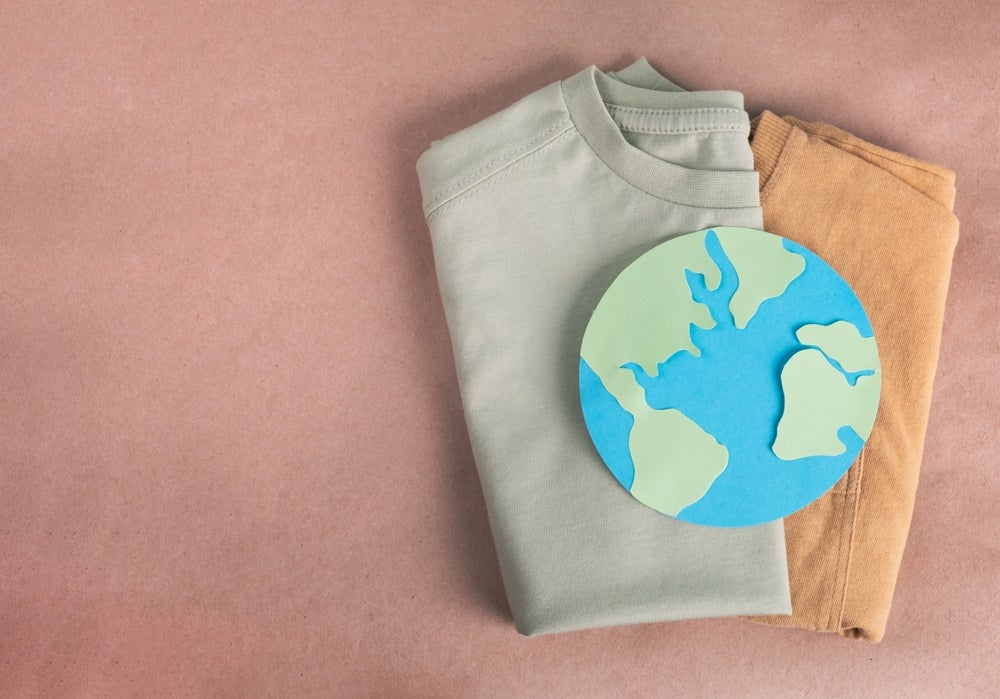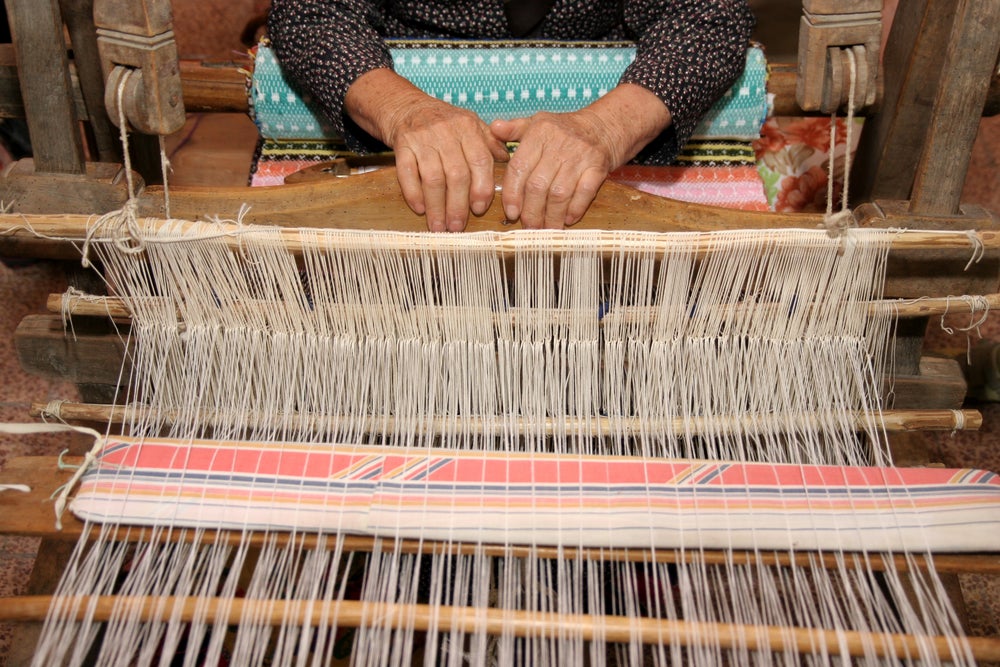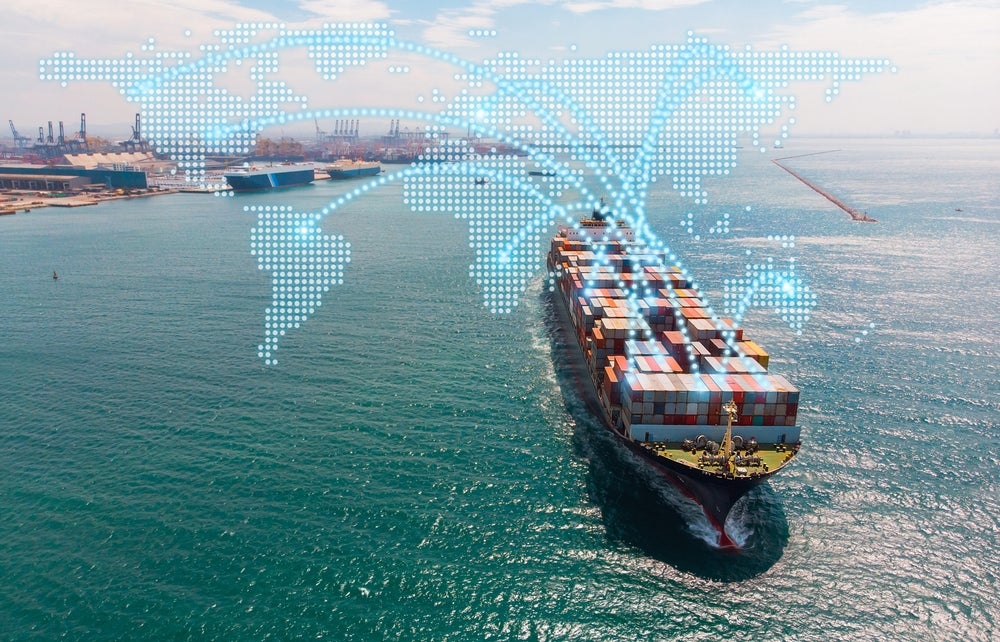
We asked industry executives what keeps them awake at night – and other issues the apparel sector should be keeping a close eye on in the year ahead. Not surprisingly, increased levels of uncertainty and ambiguity are top of the agenda for many, with the real winners in 2019 and beyond likely to be those industry leaders (and companies) who are willing to evolve and adapt to rapidly changing consumer needs, and emerging opportunities.
Marc Compagnon, executive director & group president, Li & Fung:
Not surprisingly, the US-China trade war is top of mind for us, our customers and all players in the industry. Many of our customers are affected by the trade war, and the fact the situation is so unpredictable means it’s absolutely critical to be prepared by having a strategy in place to minimise the impact. The first step is to minimise and/or move production out of China and have a diversified portfolio in place. With our vast global footprint and sourcing network, the largest of its kind in the world, Li & Fung is in the best position to help brands and retailers achieve this.
Rick Helfenbein, president & CEO, American Apparel & Footwear Association (AAFA):
Staying awake at night is no longer a problem. Early morning tweets have replaced night-time anxiety. America’s top six trading partners – China, Canada, Mexico, Japan, Germany and South Korea – have been hit with school-yard trade fights that would have been unheard of just two long years ago.
While some can argue that all this is for the best, others understand that disruption to any supply chain bakes price increases directly into the delivery system. Unfortunately, as this evolves on the world stage, retail prices go up, sales go down, jobs get lost. This scenario plays out as a vicious cycle that will be with us for years to come. Right now, for a variety of reasons, 2019 will be a tougher environment for success than what was created in 2018. In all likelihood, 2018 will have been as good as it gets for quite a while.
Edwin Keh, CEO of the Hong Kong Research Institute of Textiles and Apparel (HKRITA), and lecturer at the Wharton School at the University of Pennsylvania:
2019 will be more challenging than last year. While there may still be some upsides, there is a lot of expectation for bad news. As a result, sentiment will be more negative. Meanwhile trade uncertainties will mean more short-term tactical moves and less time to build for the long term.
See Also:
Since the opening of China in the early 1980s we have been living in an era of relative peace and prosperity. Global trade builds relationships and connections. For the apparel industry we are not only making things in the East, but also now creating new global marketplaces, and building new partnerships and alliances. If trade tensions undo our current supply chain patterns, the alternatives may have profound and significant negative effectives to the apparel industry. Hopefully in 2019 wiser minds will prevail.
How well do you really know your competitors?
Access the most comprehensive Company Profiles on the market, powered by GlobalData. Save hours of research. Gain competitive edge.

Thank you!
Your download email will arrive shortly
Not ready to buy yet? Download a free sample
We are confident about the unique quality of our Company Profiles. However, we want you to make the most beneficial decision for your business, so we offer a free sample that you can download by submitting the below form
By GlobalDataRobert Antoshak, managing director, Olah Inc:
Trade policy will be more critical to the apparel trade than at any time since the end of the Multifibre Arrangement (MFA). I am not optimistic about 2019 being better than 2018. Even if the trade war ends, there are significant structural problems in the global economy that are worrisome. Income inequality is an example. Lots of people have been left behind by globalisation, new technologies, and a changing job market. We got Trump and Brexit mainly as a reaction to the frustrations of large swathes of the population being left behind. Much of the world has gone populist – with nationalism more prominent in more countries than at any time since the Second World War.
Statements like these may seem like big-picture problems that don’t affect industries like ours – but don’t kid yourself. When countries break into subsets or turn away from global responsibilities, that’s when economies weaken. Growth rates fall. Wealth creation suffers. Consumers stay away from stores. They stop spending. And there’s a ton of history to back up these last points. The big stuff does affect the small stuff – like our industry. If consumers bail, we’re in for trouble.
Being an old cotton guy, I always worry about cotton’s place in the textile industry. Denim has rebounded somewhat over the last couple of years, which has helped to boost cotton demand. But with so many alternative fibres out there, I worry about cotton over the long term. Interestingly, the recently passed Farm Bill allows for greater production of industrial hemp in the US. Will hemp overwhelm cotton? Not just yet. But farmers always have the option to plant crops other than cotton as they search for better returns. Indeed, how they adopt other crops has a direct impact on cotton prices paid by spinning mills around the world. Cotton is cheap now thanks to the trade wars, but after that’s over with, then what? Will cotton prices soar back to where they were before trade hostilities broke out?
Dr Sheng Lu, associate professor at the Department of Fashion and Apparel Studies at the University of Delaware:
Two things are at the top of my watchlist for the year ahead:
#1: What is the future of China as an apparel sourcing base? While external factors such as the US-China tariff war have attracted most attention, the evolution of China’s textile and apparel industry is something even more critical to watch in the long run. From my observation, China is playing an increasingly important role as a textile supplier for apparel-exporting countries in Asia. For example, measured by value, 47% of Bangladesh’s textile imports came from China in 2017, up from 39% in 2005. Similar trends are seen in Cambodia (up from 30% to 65%), Vietnam (up from 23% to 50%), Pakistan (up from 32% to 71%), Malaysia (up from 25% to 54%), Indonesia (up from 28% to 46%), Philippines (up from 19% to 41%) and Sri Lanka (up from 15% to 39%) over the same time frame. A key question is how quickly China’s textile and apparel industry will continue to evolve and upgrade by following the paths of most other advanced economies in history.
#2: How will the implementation of several newly-reached free trade agreements (FTAs) affect the apparel sourcing landscape and existing regional apparel supply chains?
- The US-Mexico-Canada Free Trade Agreement (USMCA) – commonly called NAFTA 2.0 – includes several interesting changes to the textile and apparel specific rules of origin provisions, such as the adjustment of the tariff preference level (TPL) mechanism. Whether these changes will boost textile and apparel production in the western hemisphere and attract more sourcing from the region will be something interesting to watch.
- The implementation of the Comprehensive and Progressive Agreement of the Trans-Pacific Partnership (CPTPP) and the EU-Vietnam Free Trade Agreement (EVFTA) will allow Vietnam to access nearly 40% of the world apparel import market (the EU and Japan) duty-free. However, restrained by the country’s relatively small population, the apparel industry is increasingly facing the challenge of competing for labour with other export-oriented sectors in Vietnam. Realistically, what is the growth potential of ‘Made in Vietnam’ apparel after the implementation of CPTPP and EVFTA?
- In 2017, close to 80% of Asian countries’ textile imports came from other Asian countries, up from around 70% in the 2000s. Similarly, in 2017, 85.6% of Asian countries’ apparel imports also came from within the region. The negotiation of the Regional Comprehensive and Economic Partnership (RCEP) is likely to conclude in 2019, and includes member states of the Association of Southeast Asian Nations (ASEAN) and other six economies in the Asia-Pacific region (Australia, China, India, Japan, South Korea and New Zealand). Will RCEP result in an increasingly integrated Asia-based textile and apparel supply chain and make the region even more competitive as an apparel sourcing destination?
Rajiv Sharma, Group Chief Executive, Coats:
Causes of insomnia don’t change dramatically year on year. A good night’s sleep will always be aided by having a strategy in place that controls the controllable and mitigates the risk of the uncontrollable. We should all continue to be ever mindful of ethics, compliance, health and safety, which can make or break a company.
Industry 4.0 is an opportunity. How can digital technology deliver automation, data exchange, artificial neural networks, cloud computing (and so the list goes on), that brings the most benefit. Most importantly how can it increase speed, quality, innovation and sustainability.
2019 looks set to be more difficult than 2018. Raw material price inflation will continue to impact all elements of the supply chain and the macroeconomic outlook is less positive. Apparel and footwear demand will continue to be mixed across geographies and segments.
Then there are additional headwinds caused by uncertainties on the wider macro context: US-China trade issues, WTO reforms, Brexit coupled with wider EU, geopolitics, elections in India and Indonesia, currency volatility, raw material supply issues, etc.
2019 brings increased levels of uncertainty and ambiguity.
Julia Hughes, president, United States Fashion Industry Association (USFIA):
Of course, working on trade policy in Washington DC, we remain extremely concerned about tariffs and the long-term impact of the trade war on brands and retailers, and the effect on American consumers. And, no question, I’ve had a few nightmares thinking about foreign policy and America’s ability to remain competitive internationally.
But the things keeping me awake at night go beyond higher costs for companies and consumers, beyond policy proposals and job numbers and the so-called retail apocalypse. Human trafficking and slavery remain big problems in the industry’s supply chains, with modern slavery generating $150 billion for organised crime around the world. And while it’s critically important to combat these problems, businesses are seeing new compliance measures and regulations in this realm, adding to the business uncertainty.
Likewise, we are constantly worried about the threat of cyber attacks, not only on consumers who shop online, but also on our members’ supply chains. We’re seeing more regulation, like the EU General Data Protection Regulation, to deal with this, and industry experts are talking about blockchain as one way to help companies deal with all supply chain challenges.
And thinking even bigger than just our industry, climate change should be keeping everyone awake at night. I’m grateful to see many USFIA members, ranging from companies like Levi Strauss & Co to non-profits like Canopy, working hard on this issue. The message is spreading, sustainability is in the mainstream, and we can see that every action counts, no matter how small.
Despite the uncertainty and the roller-coaster ride on trade policy, I do think 2019 will be better than 2018, because we can rely on the fashion industry to continue to innovate, and work together, to solve these problems.
Siobhán Géhin, Kurt Salmon, part of Accenture Strategy:
For me, one big issue dwarfs the others, and that is the sustainability of the fashion industry. Purpose matters and is key to engaging customers and employees alike. Accenture’s latest Global Consumer Pulse Research found that 64% of Gen Z and Millennials want companies to take a stand on issues close to their hearts, such as environmental sustainability, social diversity and inclusion.
Furthermore, 62% of these consumers have said they closely consider a company’s ethical values and authenticity before buying their products. These people are also employees and it is critical for the industry to resolve – or at least make progress towards resolving – its sustainability challenges in order to remain an aspirational career choice for young talent.
In recent years, there has been a lot of focus – and rightly so – on safety standards in factories. 2018 saw a growing awareness of another aspect of fashion: its impact on the environment in terms of water load, pollution and clothes going to landfill. We expect to see this issue grow in importance in 2019, and to see customers demand more transparency. Fashion businesses will need to react accordingly.
2019 is a difficult year to predict: volatility in economic conditions in many key markets, as well as in the outlook for global trading, is at unprecedented high. We expect to see a challenging year, in which apparel companies and retailers will need to be prepared for continuous reinvention.
Rick Horwitch, vice president and global retail lead for supply chain strategy at Bureau Veritas Consumer Products Services:
My main concerns relate to the next generation of industry leaders, and what “keeps me up at night” is increasingly poor communication and analytical skills, a lack of process knowledge and a lack of supply chain transparency and traceability.
- Clear and effective communication skills are of utmost importance. In a world that is wired and “connected” 24/7, the lack of interpersonal communications is often the root cause of most problems. While social media tools are important, verbal communication is invaluable. My concern is that current, and future, generations of business leaders are not learning the importance, and value, of verbal communication and personal connection.
- Technical training in areas like manufacturing, sourcing, product engineering and quality management has become a lost art. As products, value chains and consumer demands become more complex, the need for a high level of technical understanding becomes increasingly important.
- Investment in Information/Data/Analytic Management Systems, and people, needs to be elevated to the same level (or higher) as merchandising, design and sales functions. Companies need data, and the related insights, to unlock the opportunities.
- Strategies need to be built to increase transparency and trust. Consumers are demanding “a right to know” – are their products safe, made in an environmental and socially friendly manner, where their products came from (not just the ‘Made in’ label). As the need for speed, sourcing shifts and social media engagement accelerate, this will become increasingly important.
The real winners will be those industry leaders (and companies) who are willing to evolve and adapt to rapidly changing consumer needs, and emerging opportunities, in 2019 and beyond.
Matthijs Crietee, secretary general, International Apparel Federation (IAF):
Existing players in the industry are vulnerable to outsiders using technology to bypass old systems and introduce new business models. It remains to be seen in what way and to what extent the supply chain will be reshaped by new entrants in 2019. A leading European online fashion retailer is almost doubling its data analysis department from 1200 to 2000 people, which will probably lead to a concentration of power and profits. The question is to what extent some of the revenues thus created will be used to invest in supply chains.
Unfortunately we can’t avoid mentioning the combined uncertainty of the US-China trade war and Brexit, which will cast a big shadow over 2019. A no-deal Brexit is an economic experiment that no industry wants to undergo. It’s not all bad, since the threat of new trade barriers does create short-term winners. But in the longer run, uncertainty associated with trade wars will act as a factor pushing us again to a more footloose industry, where it is not about improving production but only about moving production. For the global apparel industry, therefore, ultimately trade wars are always bad. In the end we will almost all lose.
Dr Achim Berg, senior partner at McKinsey & Company and co-leader of McKinsey’s Apparel, Fashion & Luxury Group:
Consumer shifts linked to technology, social causes, and trust issues will shape 2019, alongside the potential disruption from geopolitical and macroeconomic events.
In our McKinsey Global Fashion Index, we forecast growth of 3.5% to 4.5% for the fashion industry overall – a slight slowdown versus 2018. Apparel growth, in turn, will hold steady at 4% to 5%. The polarisation across price segments continues: the value segment will achieve growth of 5-6% – the industry’s highest rate – followed by the luxury segment at 4.5-5.5% [McKinsey Global Fashion Index, SoF2019].
The megatrends driving industry development in the coming years also offer exciting opportunities. After decades in which the way of working in the apparel industry changed little, innovation and transformation are now the name of the game. Omnichannel, digitisation, and the circular economy are opening the industry for new processes, new business models, and new talent.
Mike Flanagan, CEO of apparel industry consultancy Clothesource:
Nothing keeps me awake at night – but perhaps five spectres on the horizon ought to:
- Donald Trump’s spat with China, with the prospect of an additional 25% duty on all US apparel imports from China by April. I believe that won’t happen. China’s economic growth is now around 6.5% – the basic minimum China needs to keep its current employment levels while improving productivity. Xi Jinping is neither stupid nor impetuous, and he’s not going to destroy China’s job-sustaining exports to the US. Expect China to find a way of making enough concessions to Donald Trump to stave off extra import duty.
- A likely recession. We’ll have one sooner or later, and a 2019 recession may offer almost enough benefits to compensate for the problems. In particular, it would: Encourage China to placate those of Donald Trump’s obsessions that are well-founded; and stop internet retailers irresponsibly leading prices down.
- The risk that Britain might crash out of the EU with no deal. Especially disturbing if we’re facing a recession. But, ever an optimist, I think a looming recession would force Britain’s MPs into buying some version of the Chequers Deal, or into extending EU membership. Especially a recession hitting China as well as the West this time.
- Developing-world manufacturers probably can’t afford to subsidise Western guilt.
- The possibility that irresponsible online retailers might keep on bringing apparel prices down, undermining the profitability of the entire industry.
But I really would lose sleep if I thought retailers believed the naively uncommercial strategies we hear from consultants and media. Data from Britain’s Office of National Statistics in November and December revealed sales growth among the highest in its 30 years of detailed records. One reason is the remarkable growth of Britain’s smaller retailers: even in the clothing business, 2018 sales at retailers with under 100 employees were 34% higher than in 2016. They’ve got a lot to teach the rest: relying on their own customer understanding, recapturing their self-confidence, rediscovering their traditional frugality – and managing their suppliers with their traditional mixture of carrot and stick. The way all retailers used to operate.
See also:
- Outlook 2019 – Apparel industry challenges and opportunities
- Outlook 2019 – Apparel sourcing trends and strategies
- Outlook 2019 – Top apparel supply chain tactics in the year ahead







